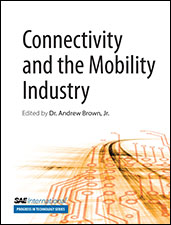Book

Active Safety and Connectivity in the Mobility Industry
2011-10-24
This set includes two books, edited by Delphi's Chief Technology Officer Dr. Andrew Brown, Jr., which explore some of the most significant challenges currently facing the automotive industry-building safer and more connected vehicles. Active Safety and the Mobility Industry and Connectivity and the Mobility Industry each include 20 SAE technical papers on their respective topics, originally published from 2009 through 2011. Active Safety and the Mobility Industry Details the latest innovations and trends in active safety technology and driver distraction prevention techniques. Connectivity and the Mobility Industry Covers such topics as vehicle-to-vehicle communications, telematics, and autonomous driving. It also includes three original articles on automotive connectivity, written by various industry experts. Buy a Combination of Books and Save!




